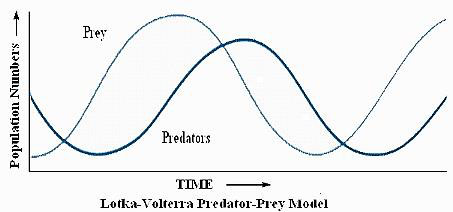|
Management Deer Hunts and Trophy Bucks Everyone who hunts has
dreamed about that monster trophy buck that we hope to get a crack at some day.
However, have you ever given any thought as to how they get so big? While
studying wildlife management in college many years ago, I was intrigued by the
predator/prey relationship and how it affected the populations of animals. Left
to their own devices (i.e., without human intervention), animal populations are
subject to significant cyclic variations. As the prey (deer) increased in
numbers, so did their predators (wolves, pumas, etc). Then, as the predators
continued to multiply given the abundance of food, their food supply (deer)
began to dwindle. With the decrease in their food supply, a decrease in
predator numbers followed. These cycles were often wild in their fluctuations
and rarely resulted in a stable population of either deer or predators. In the absence of
predators (including hunters), deer populations will still undergo substantial
cyclic fluctuations. This time the cycles occur when population numbers which
exceed the carrying capacity of the environment. Under those circumstances, starvation
and disease devastate the population and numbers drop drastically; e.g. the
Kaibab deer in Arizona. The point of both
examples is that deer populations (elk, antelope, etc), when left to the tender
mercies of nature are never stable. The numbers fluctuate from unsustainable
highs to unacceptable lows. Enter scientific wildlife management techniques.  Game ranches and
hunting reserves, in the United States and Africa, utilize wildlife management
techniques designed to maintain populations at the highest sustainable levels
without wild cyclic fluctuations. To accomplish this, the herds are �culled� on
a regular basis. This management process requires the harvest of excess animals
(both trophy and non-trophy) to insure that the remaining herds are healthy and
have sufficient food and habitat to survive. In the absence of natural
predators, there are only two choices: Pay professionals (with taxpayer money) to
cull excess animals, or let sportsmen
buy hunting licenses, clothes, rifles, etc. The latter puts money into the
economy, rather than taking it out. In short, hunters are
an essential part of scientific wildlife management. If the anti-hunting
fanatics of the world had their way, wildlife populations would fluctuate
wildly and be subject to regular disease outbreaks and starvation. The �good� (and
I use that word very loosely) intentions of these misguided and ignorant folks are
founded on junk science and ignorance. They probably went to school with the
anti-gun crowd who believe that disarming law abiding citizens will reduce
crime, although statistics clearly show otherwise. License quotas in most
states are based on the best information available to the management biologists
(i.e., the number of animals which can/should be harvested to maintain a stable
population). In addition to their regular trophy tags, game ranches and hunting
reserves across the globe often have regular management hunts. These hunts are
designed to harvest excess animals (usually non-trophy) to maintain the health
of the overall population.  The hunt for these animals is every bit as challenging as for a 170+ whitetail deer, except their antlers won�t make the record books. Even so, their racks make fine skull mounts to preserve the memories of your hunt. So, the next time that you head out for a fall hunt; remember, harvesting a �non-trophy� deer is just as important to the overall welfare of the population as taking that monster wall hanger. The three whitetails pictured above were taken by my wife and daughter during a management hunt in south Texas. The decision was made by the ranch manager that the genetics of these three were not desirable, hence the management hunt. Mary and Susannah had a wonderful four-day hunt, taking four whitetails, a black buck and a surplus cow elk. Our freezer is full of meat for the winter and the herd is better off. The next time you hear someone disparage management hunts, remember: without them, there would be fewer of the trophy animals that we all hope someday to find. |